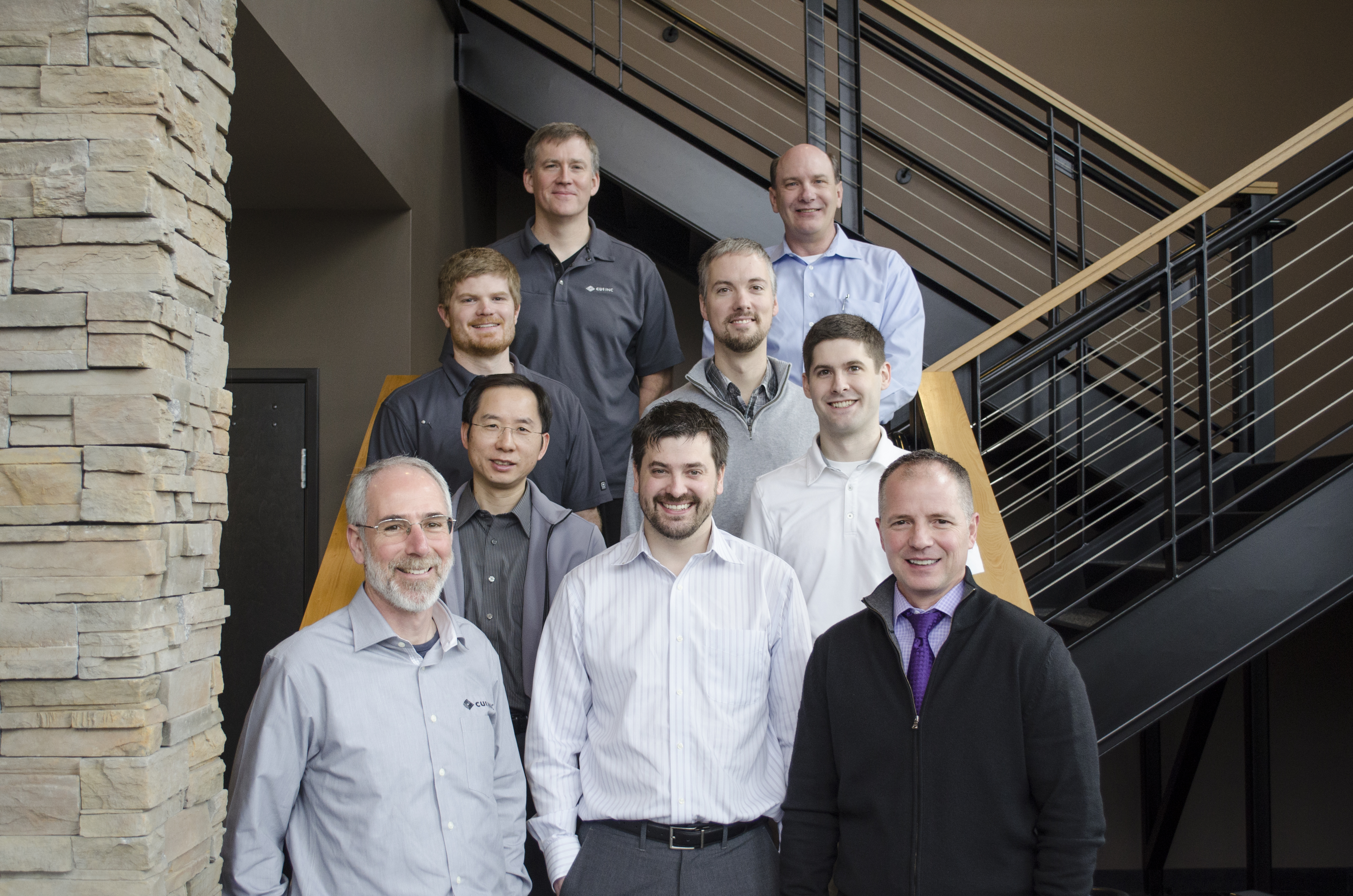Over the past several years, CUI has run into many instances with customers who needed/wanted the value proposition of digital power, but didn’t have the necessary resources to implement such a shift and/or they didn’t want to deal with the communication bus associated with digital power. Typically, these customers were most concerned with one or two critical power rails and they were OK with the existing performance of their traditional analog solutions.
The Novum team: (left to right) top row — Doug Lefferts, Roy Stai; 2nd row — John Sellers, Ryan Gibson; 3rd row — Don Li, Ron Stull; Bottom row — Bruce Rose, Jeff Smoot, Mark Adams
CUI had been providing digital power design on a custom basis for some time and was continually asked about the standardization of this concept. Early in 2012 the company decided to define and design a product that could help customers wanting to make the leap into digital but that had limited resources needed to commit to the digital design effort.
The result was the NSM2P, the industry’s first self-compensating point-of-load dc/dc module family that needs no digital bus communication. This product allows CUI’s customers the access to the highest-performance, highest-density digital power module on the market without the necessities of full digital implementation across their design.
In order to achieve a no-bus module concept, CUI had to make the most critical decision of choosing a controller that would allow the flexibility of design and the features/technology that would allow for a self-contained optimum performance module. Having worked with several controller companies, CUI engineers decided that the technology and benefits in the PV3012 controller from Powervation would allow them to achieve their end goal.
Ease of use was a key driver of the NSM2P design, and the PV3012’s cycle-by-cycle auto-compensation was key to the design choice. The ability to provide a customer with a plug-and-work module without any effort needed for compensation was critical.
The second focus for ease of use was access to the power management and fault response features. The CUI module incorporates a simple three-pin I2C header that allows the customer to use a CUI USB-to-I2C dongle and the CUI Power GUI to make the necessary adaptations in timing and ramp rates, as well as fault response management.
During development, the NSM2P allows the customer to access and dynamically change the necessary requirements from their design via the I2C header, but when the module is shipped to the customer for production the I2C header is removed and is shipped preprogrammed. With that in mind, one of the key features in the module is the ability to store up to eight individual configurations. Thus CUI can ship a single part number to the customer that in essence is eight unique configurations.
Advertisement
Learn more about CUI Inc





